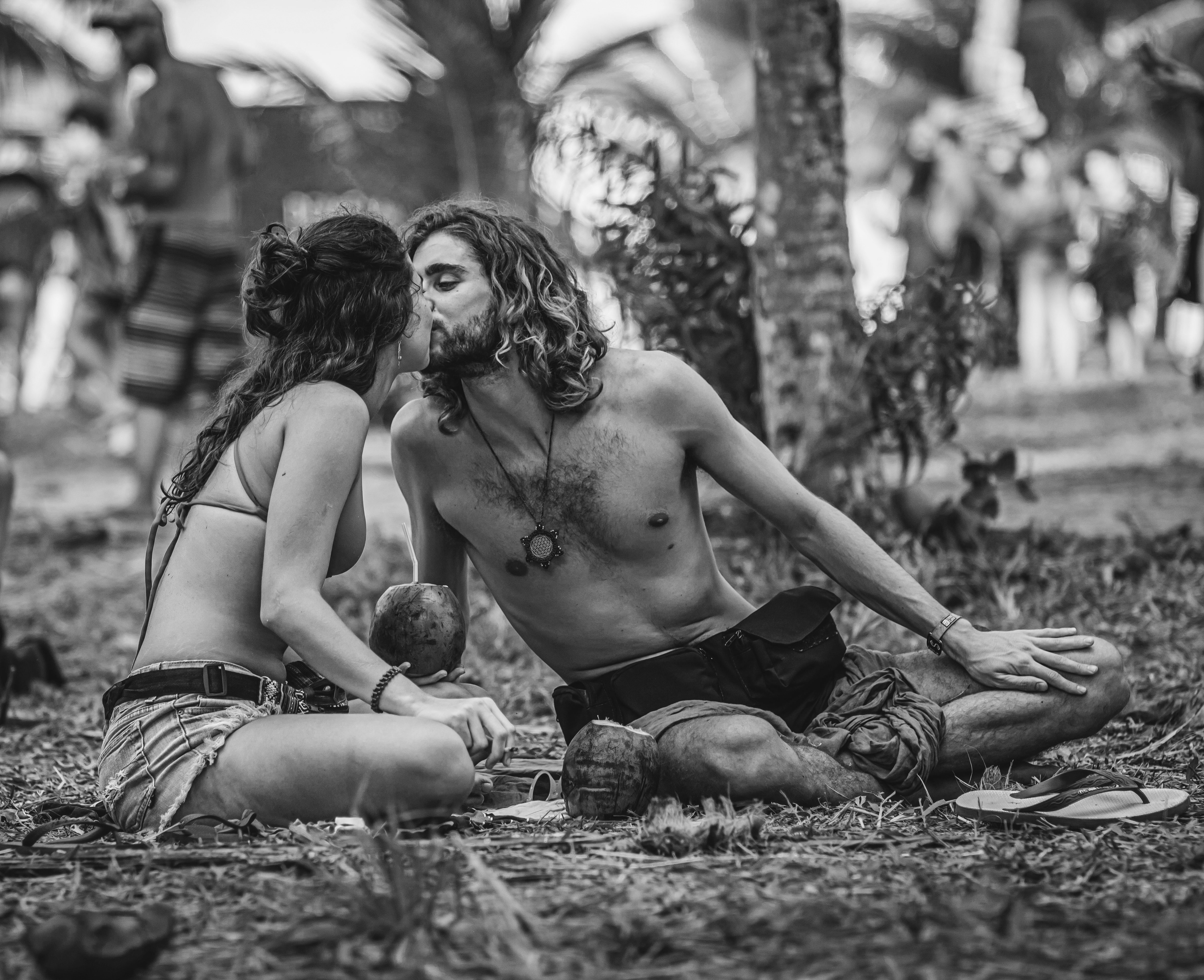Rock Music & Hippies

The Beatles acted as trendsetters, in music and fashion, for their whole career. The way they dressed also helped reflect what was happening socially at the time. After they were discovered at The Cavern Club in Liverpool by Brian Epstein, he wanted to transform their shabby teddy boy aesthetic, reminiscent of Elvis Presley’s early days, into a clean-cut and chic look. He wanted them to appeal to young kids, but not upset parents. Epstein took the boys to his tailor, Walter Smith, to get them custom suits made that they could add their individualistic touches to. With each member of the band being in their early 20s at this point, and with the ‘60s sexual revolution looming, each of them wanted ultra-tight-fitting straight-cut trousers, so tight that they could barely sit down in them, and jackets with velvet collars that were equally slim fitting. Gregg can be quoted as stating that the boys wanted to look “slim, youthful, and erotic."
This attitude continued into 1964, with their film A Hard Day’s Night. Throughout the film, the members of the band make several cheeky jokes and innuendos that play into their youthful image. Their look in the film also challenges the traditional male look, with their long bowl haircuts, Cuban-heeled boots, and tight-fitting suits. Another thing that is heavily highlighted in A Hard Day’s Night is the pandemonium that followed the band everywhere they went. For example, the opening scene is the band getting chased through London on foot by a mob of screaming fangirls. The concept of the fangirl is something that society was still getting used to, having not seen this level of pandemonium since Elvis. Gregg suggests that the kind of behavior seen practiced by fangirls was a sign of the sexual revolution coming later in the decade, by showcasing the idea of “properness” being shed by girls’ value system and their ability to “shed their inhibitions” each time they see one of the members of the band. An attitude of rebellion was quickly adopted by the young people of the ‘60s and The Beatles were at the forefront of it, with Duncan claiming that music played a central role in youth rebellion and the counterculture movement.
The counterculture movement of the ‘60s, usually referred to as “hippies”, was primarily teenagers and young adults who no longer trusted the “establishment” and wanted to feel free from the confines of tradition and wanted to feel individualistic in who they were and what they stood for. After the introduction of the birth-control pill, the widespread popularity of psychedelic drugs and marijuana, and the ongoing Vietnam and Cold Wars, hippies felt the freedom to be experimental with drugs, fashion, art, and sex. In their fashion choices, they valued more sustainable choices by preferring natural fabrics and thrifting and upcycling many of their clothes. During this time, it became popular for both genders to wear their hair long and many men also wore facial hair. Bright colors, real leather, Indian bead-work, hand-woven and knit pieces, patchwork, US Army shirts, silk, feathers, and sheer clothing were all common elements seen in hippie fashion.
This way of dressing was not well received by the older, more conservative, generation. They still believed in traditional gender roles and the ultra-clean-cut, proper way of dress for men and women. The hippies’ style blended traditionally feminine and masculine elements of dress. This frightened the older generation because it further emphasized that the value system that they had grown up with and gotten to know, was being broken down and replaced with a new, more progressive one.
In 1967, The Beatles released their album Sgt. Pepper’s Lonely Hearts Club Band. The album was very experimental for the band at the time and leaned into the psychedelic sub-genre of rock music that was gaining popularity. It was straying from their clean-cut, youthful look and safe sound. The album’s artwork is also inspired by popular hippie fashion, with each member of the band dressed in a uniquely brightly colored military-uniform-inspired suit.
1967 was an instrumental year for hippies and the music industry. Music festivals started to pop up and were becoming very popular, especially among hippies. The first of them was The Human Be-In, which was held in San Francisco, California, and attracted 25,000 attendees. It saw performers native to the area, like Jefferson Airplane and Grateful Dead. As the “Summer of Love” began, one of the biggest events of the year was The Monterey International Pop Festival. It attracted 75,000 attendees and was held in Monterey, California. It saw popular performers from all over the world like Jimi Hendrix, Ravi Shankar, and The Byrds. This festival was also the first time Hendrix and Shankar performed in the United States. In New York City, an event was held that was inspired by The Beatles’ song, “All You Need is Love”. Its purpose was to encourage bright and expressive dress, face painting, and drug use. After 1967 ended, music festivals continued to be held across the US and eventually Europe. 1969 saw the Woodstock Music and Art Fair in Bethel, New York. The early 1970s saw the first Glastonbury in England and Rock Werchter in Belgium.
Rock music helped push society forward by allowing full self-expression and encouraging experimentation. The fangirls that followed The Beatles throughout the early ‘60s to the music festivals of the late ‘60s, pushed the boundaries of what was traditionally acceptable through their behavior and how they physically presented themselves. Rock music festivals were places where hippies could experiment with how they expressed themselves. Their community and the progressive nature of it allowed the people in it to feel secure enough to experiment with androgynous fashion choices and wear things that they may otherwise never feel comfortable enough to wear. It was an important time in history for the progression of society and rock music helped soundtrack it.





